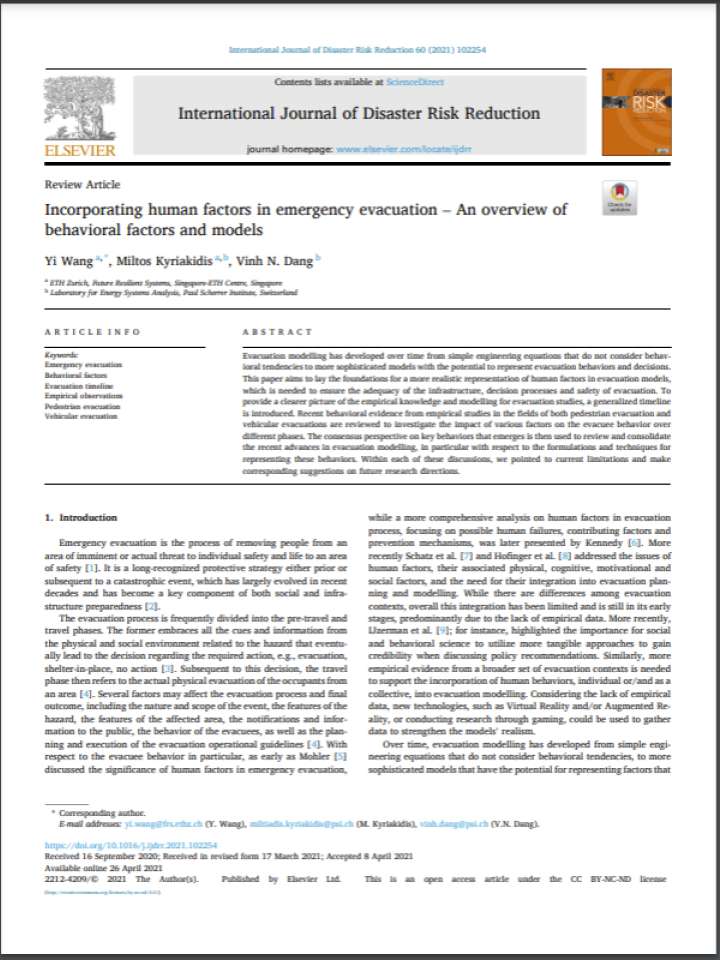Incorporating human factors in emergency evacuation – an overview of behavioral factors and models
This paper aims to lay the foundations for a more realistic representation of human factors in evacuation models, which is needed to ensure the adequacy of the infrastructure, decision processes and safety of evacuation. Emergency evacuation is the process of removing people from an area of imminent or actual threat to individual safety and life to an area of safety. It is a long-recognized protective strategy either prior or subsequent to a catastrophic event, which has largely evolved in recent decades and has become a key component of both social and infrastructure preparedness. Evacuation modelling has developed over time from simple engineering equations that do not consider behavioral tendencies to more sophisticated models with the potential to represent evacuation behaviors and decisions.
This paper presents a literature review on human factor considerations associated with emergency evacuations. By proposing an evacuation timeline that addresses both the evacuees’ and evacuation coordinators’ perspectives, recent empirical evidence from diverse evacuation contexts is brought together. The impact of various factors on the evacuee behavior over different phases is discussed in detail, in order to give a perspective on the current consensus on human behaviors to be modelled in evacuation studies. Further, this review also structures the current state-of-thepractice in evacuation modelling, with a focus on the treatment of evacuee behaviors. The recent advances in different model formulations and techniques to replicatte evacuation behaviors are reviewed and consolidated. This study aims to promote the interdisciplinary efforts in evacuation modelling, involving the expertise of social scientists, engineers, fire scientists, computer scientists, and emergency planners, among others.
Explore further
